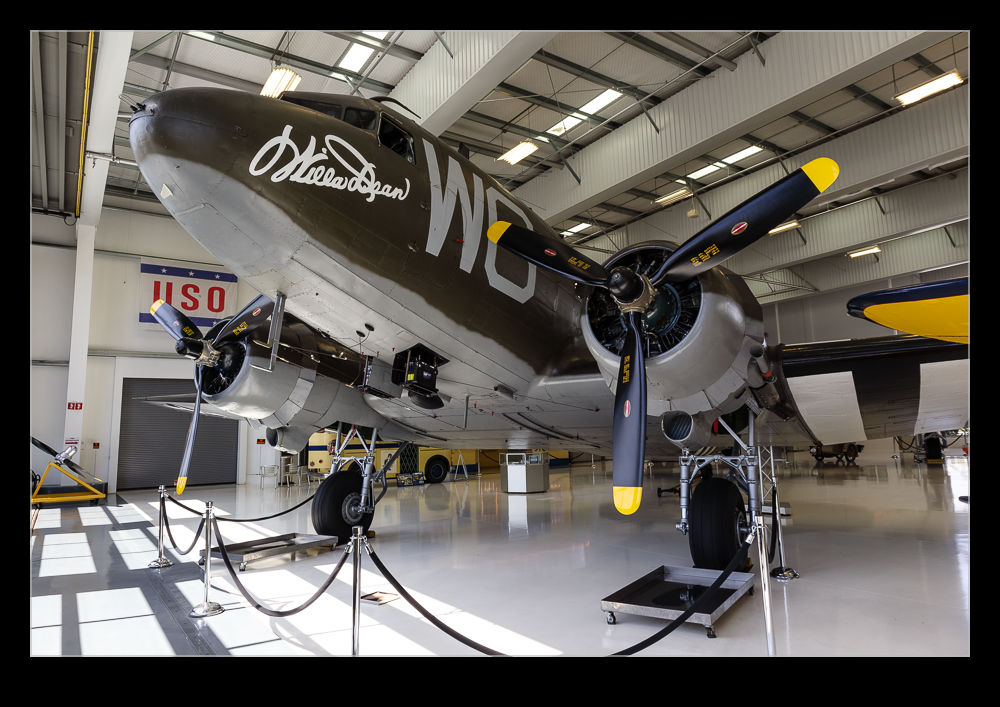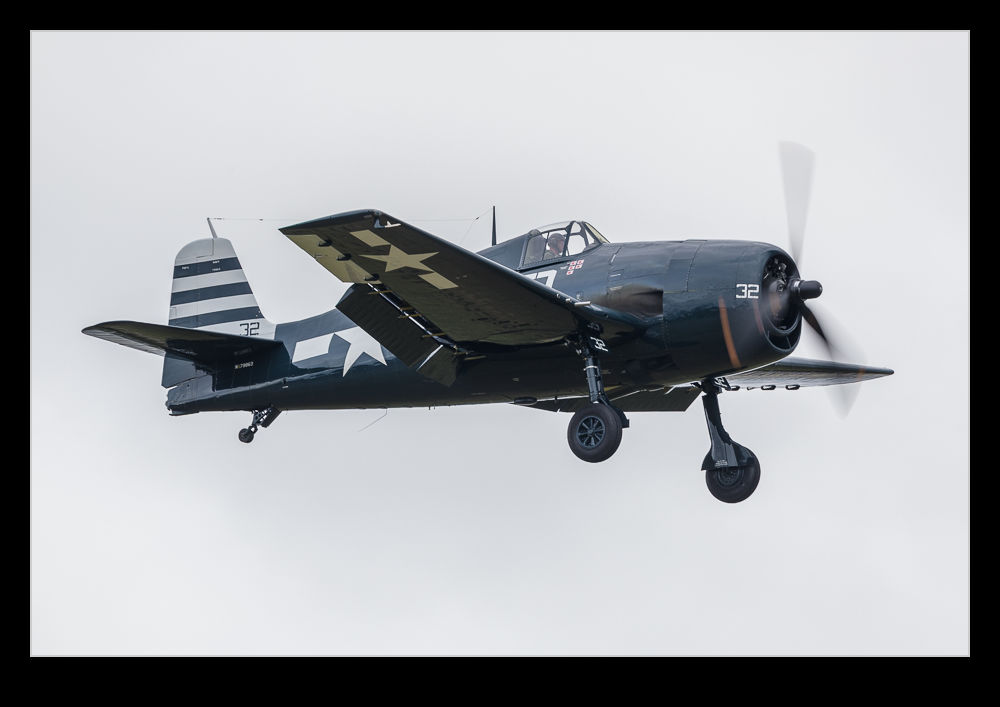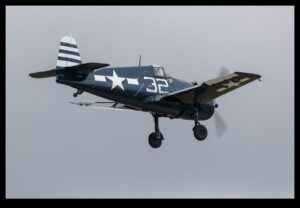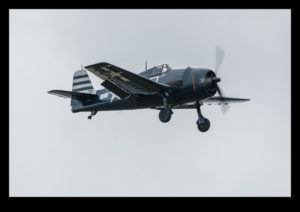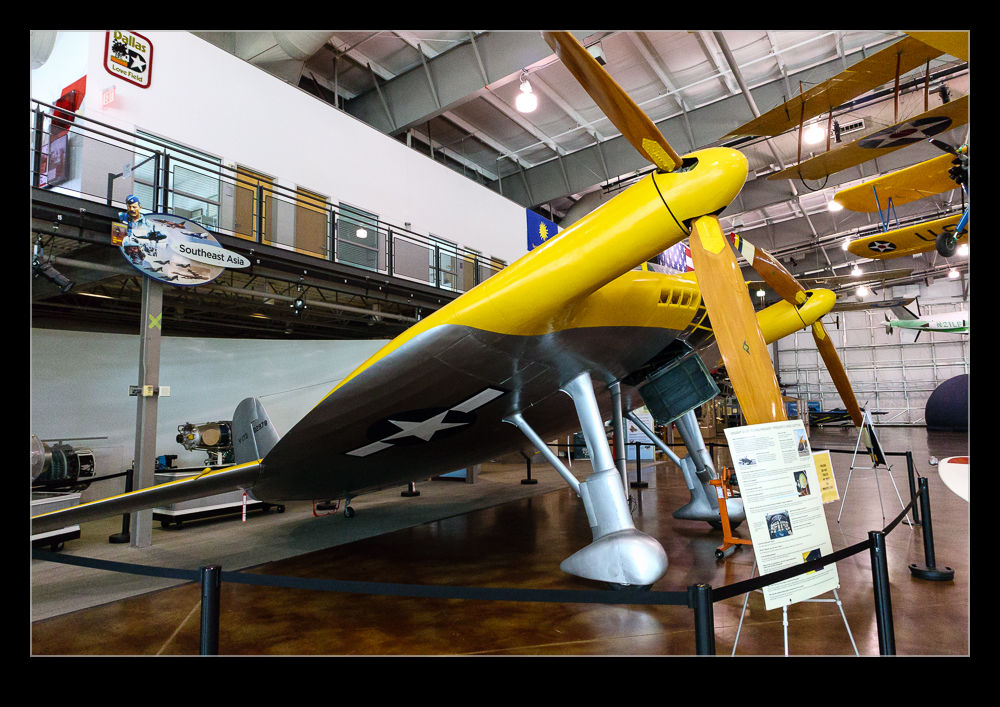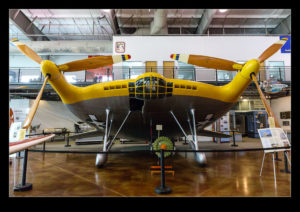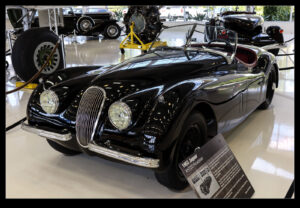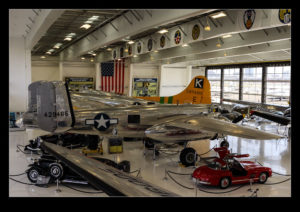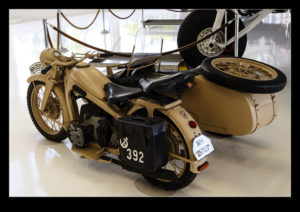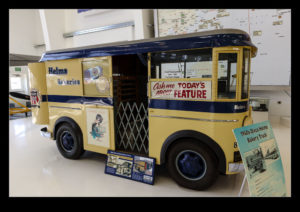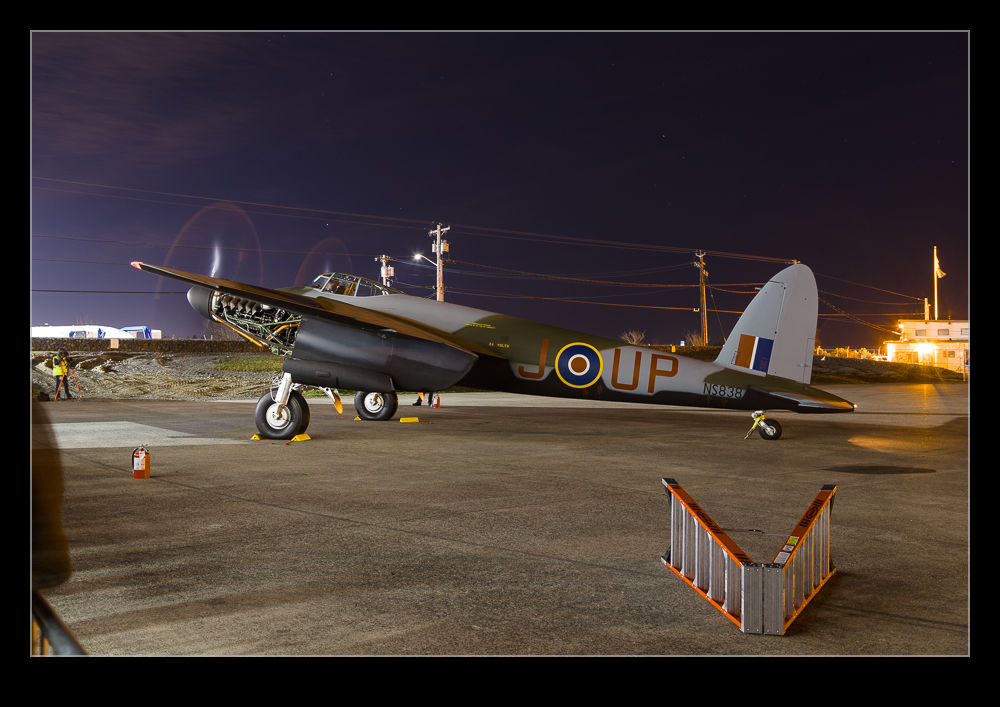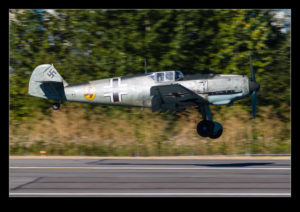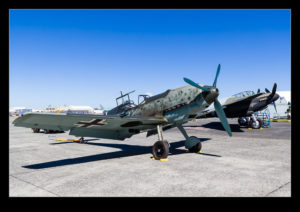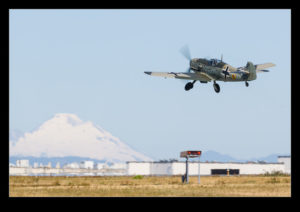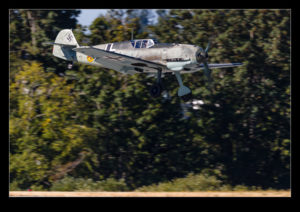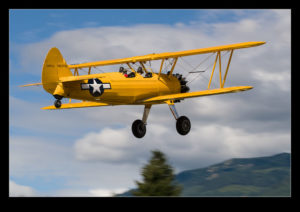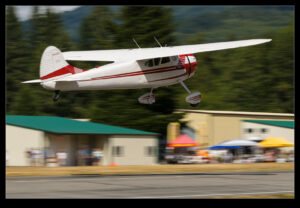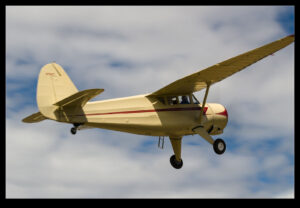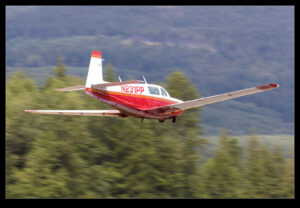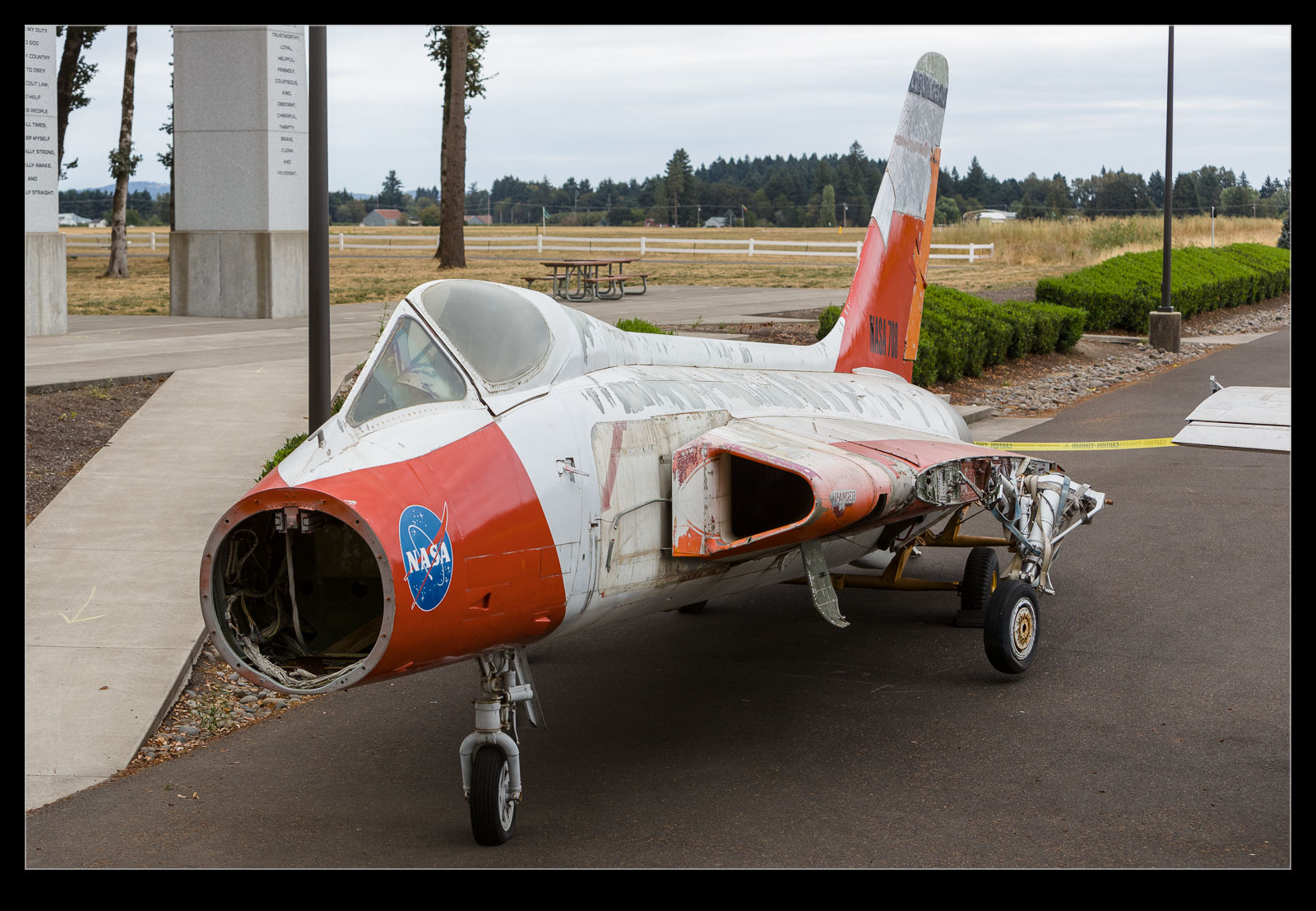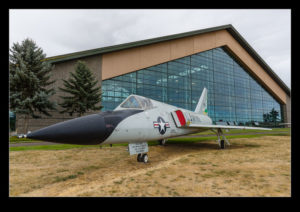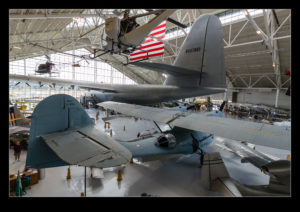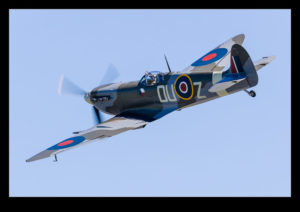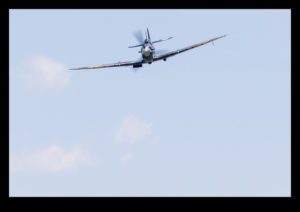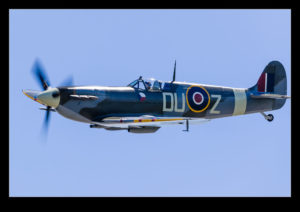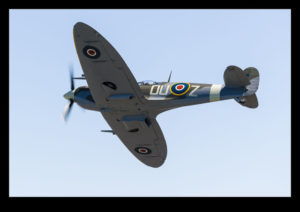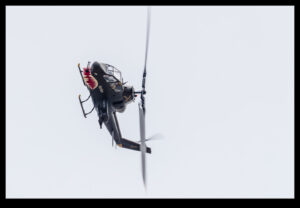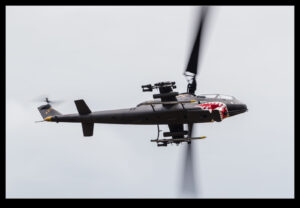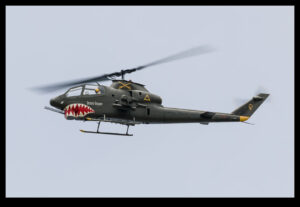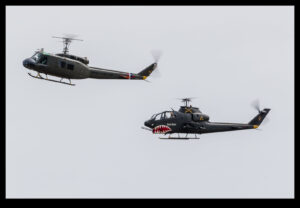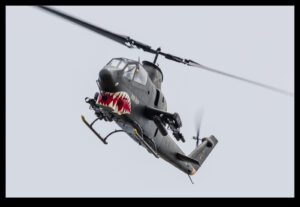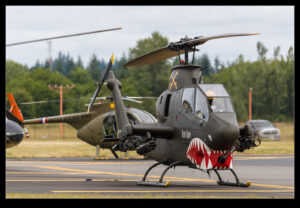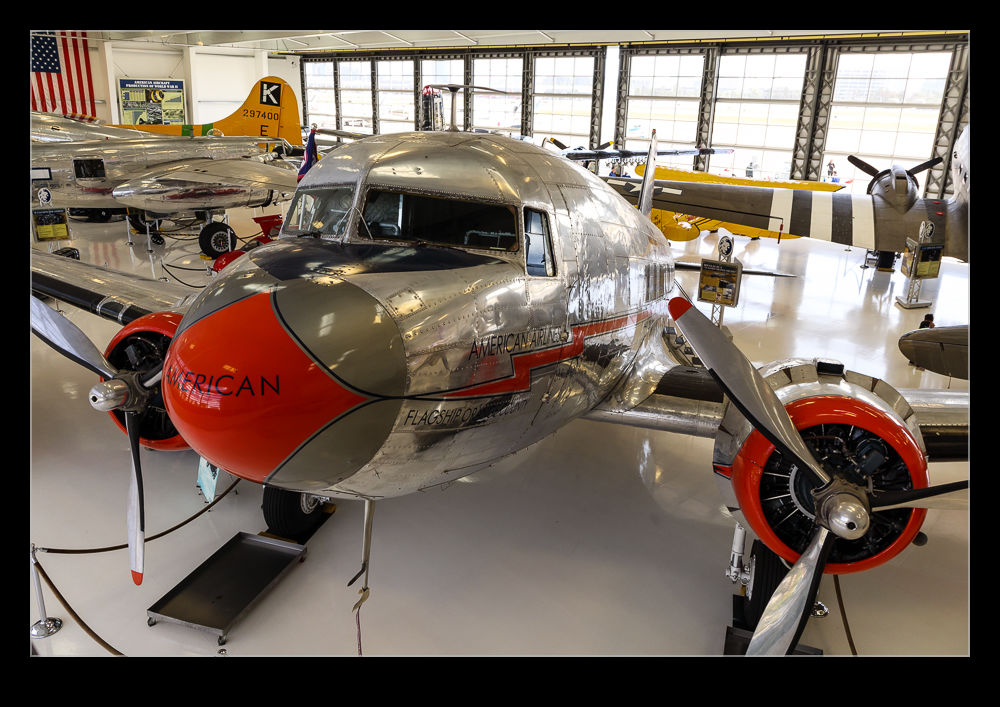 The Lyons Museum included a few larger types in the hangar. At one end they had both a DC-3 and a C-47. While notionally different types, they are in principle the same aircraft and one that Douglas churned out in huge numbers. The DC-3 was configured in a slightly more comfortable way than the C-47 though. Troop transport was not a luxury business. Get as many people and bits to where you are going as you can. The paying passengers were a more demanding crowd and the interior is designed to make them feel like they were being treated accordingly. Either way, they are both great looking aircraft.
The Lyons Museum included a few larger types in the hangar. At one end they had both a DC-3 and a C-47. While notionally different types, they are in principle the same aircraft and one that Douglas churned out in huge numbers. The DC-3 was configured in a slightly more comfortable way than the C-47 though. Troop transport was not a luxury business. Get as many people and bits to where you are going as you can. The paying passengers were a more demanding crowd and the interior is designed to make them feel like they were being treated accordingly. Either way, they are both great looking aircraft.
Tag Archives: vintage
Hellcat Surprise Pattern Work
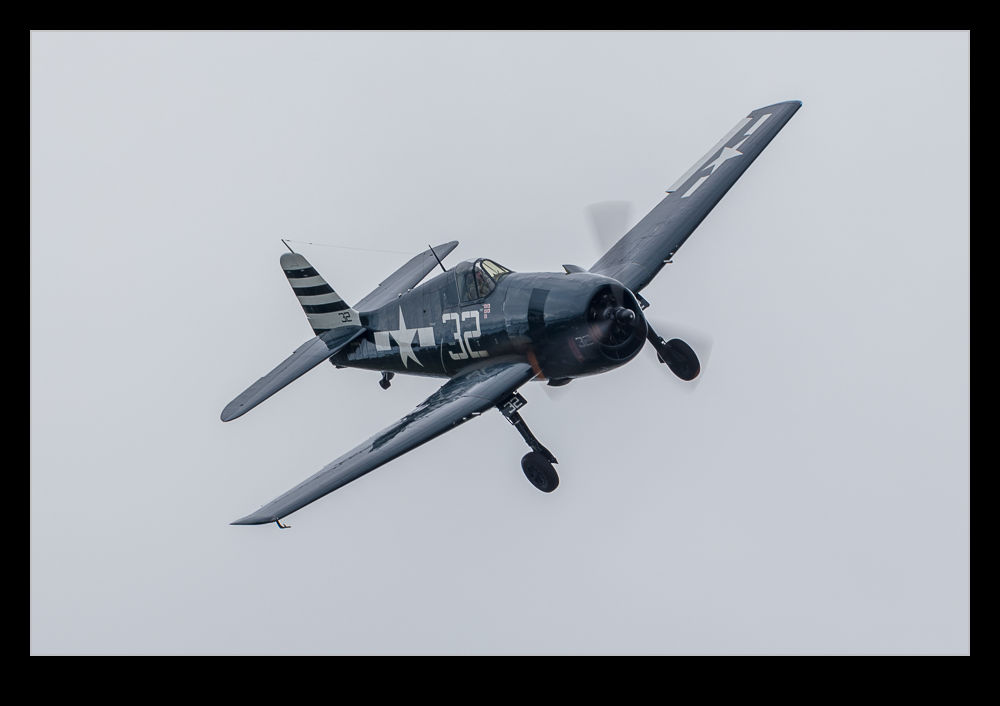 I had gone to Paine Field for an Antonov arrival that has its own post here. We got a nice bonus while there. A Hellcat was up for a Check flight of some sort which I didn’t even know about until it flew a pattern overhead. I had figured it was just another light aircraft making a midfield departure. The overhead was nice to see but a bit distant.
I had gone to Paine Field for an Antonov arrival that has its own post here. We got a nice bonus while there. A Hellcat was up for a Check flight of some sort which I didn’t even know about until it flew a pattern overhead. I had figured it was just another light aircraft making a midfield departure. The overhead was nice to see but a bit distant.
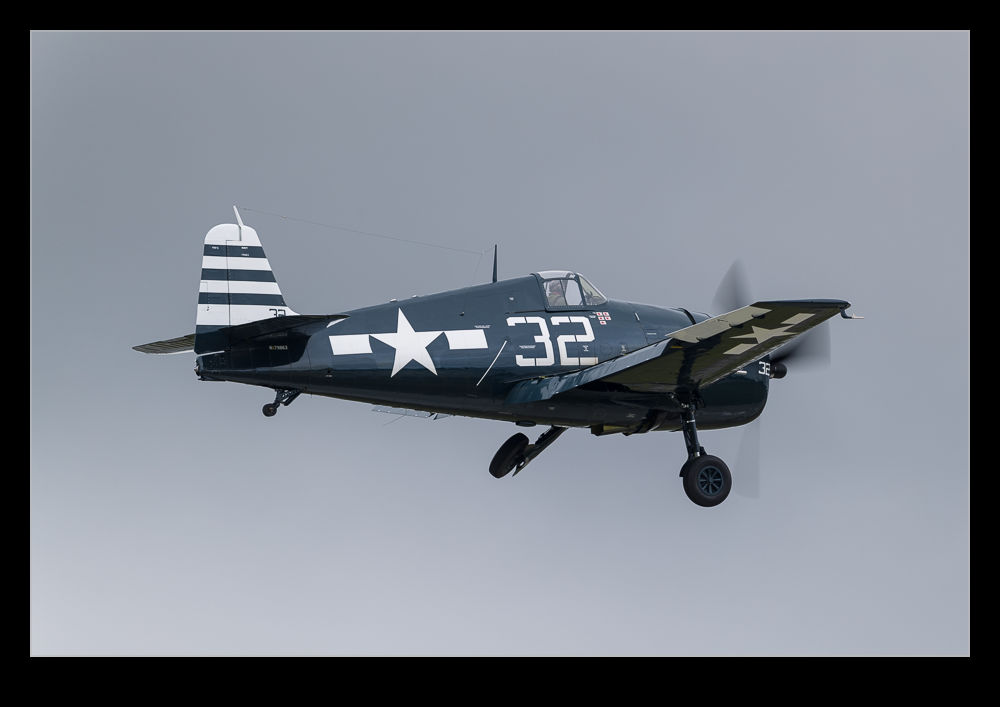 However, whatever the check flight was for was obviously done quite quickly as they called for an approach. As they came down final, another light aircraft was ahead of them and was not going to vacate in time so they were told to go around. Two approaches! Thank you. The first had been straight in but the second was a nice curving approach with a good top side view. That will do nicely.
However, whatever the check flight was for was obviously done quite quickly as they called for an approach. As they came down final, another light aircraft was ahead of them and was not going to vacate in time so they were told to go around. Two approaches! Thank you. The first had been straight in but the second was a nice curving approach with a good top side view. That will do nicely.
Flying Pancake
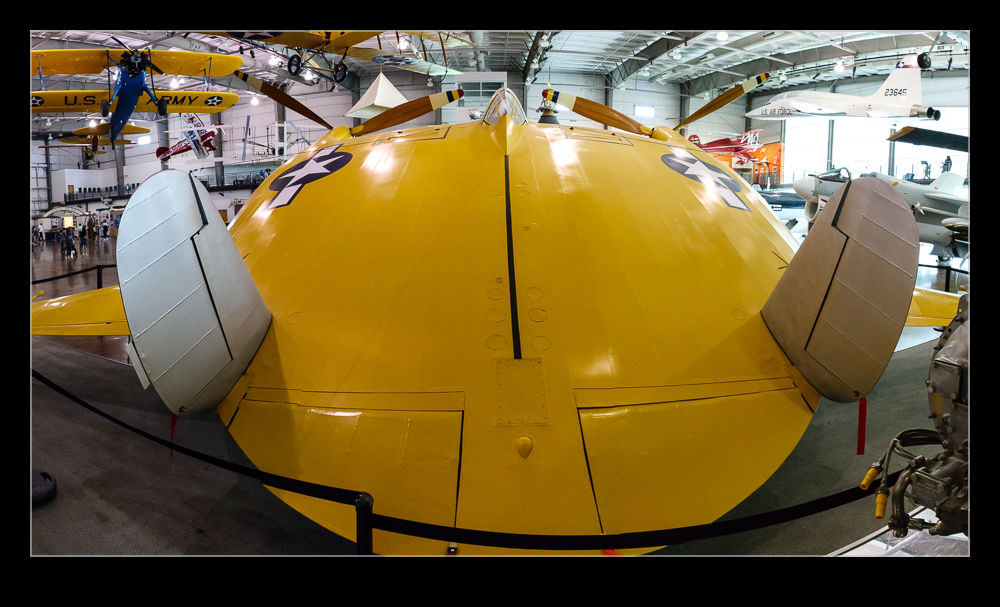 A long time ago, I was part of an ISAP symposium held in Dallas. During the field trip day, we went to a number of locations, all of which were very interesting. One of them was the restoration facility at what was then the Vought factory, now Triumph I think. This was run by volunteers that had retired from the plant and was working on a number of projects including painting an F4U while we were there. Another project that was a work in progress was the Flying Pancake. At the time is was skinless and in a rotating frame to allow everyone to work on it more conveniently.
A long time ago, I was part of an ISAP symposium held in Dallas. During the field trip day, we went to a number of locations, all of which were very interesting. One of them was the restoration facility at what was then the Vought factory, now Triumph I think. This was run by volunteers that had retired from the plant and was working on a number of projects including painting an F4U while we were there. Another project that was a work in progress was the Flying Pancake. At the time is was skinless and in a rotating frame to allow everyone to work on it more conveniently.
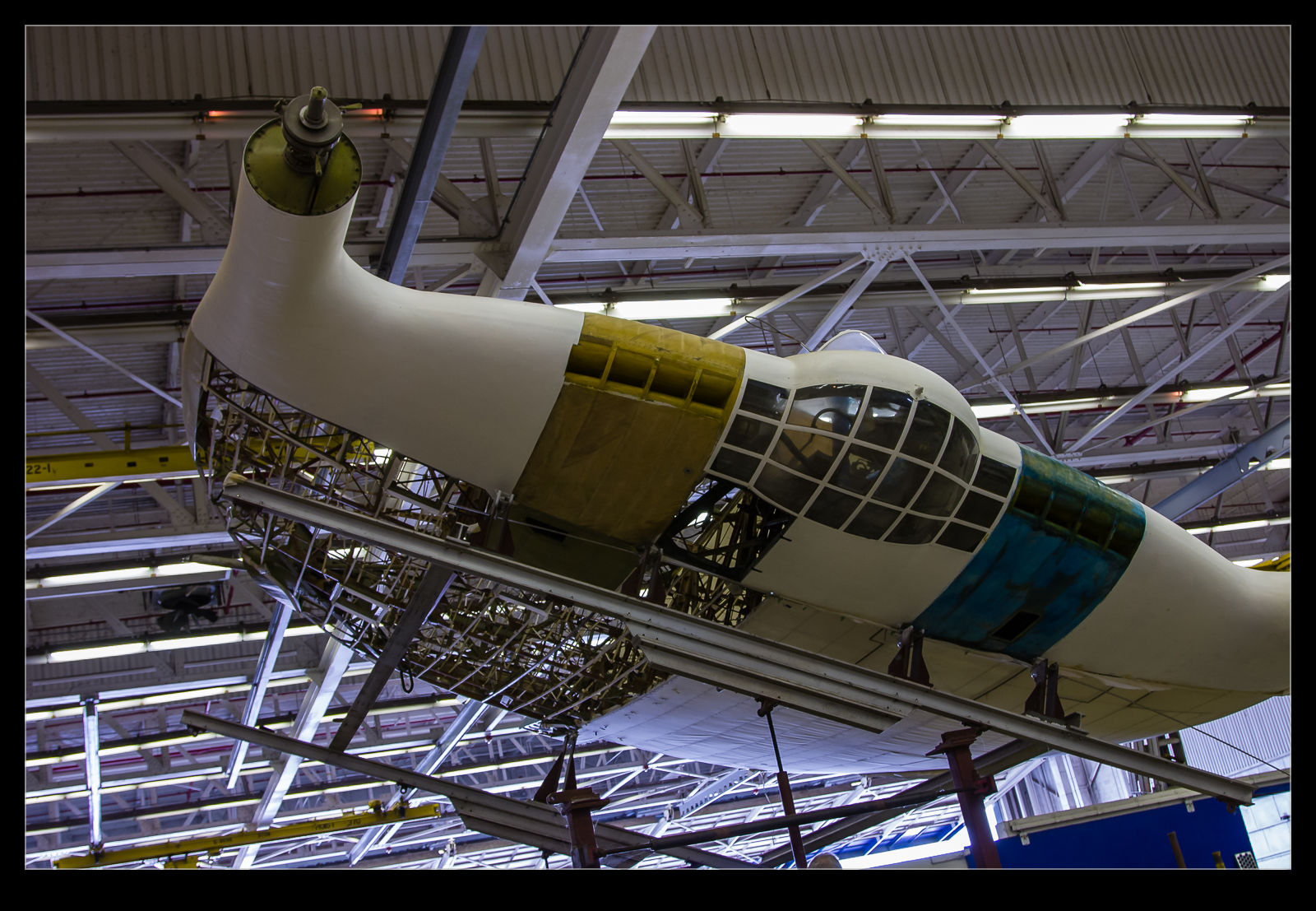 Roll forward to now and I was at the Frontiers of Flight Museum at Dallas Love Field. The museum is the home of the finished restoration. The aircraft looks fantastic. The restoration team did a great job. To see it completed including the huge propellers is something special. Fortunately, there is a mezzanine level above the plane so it is possible to see it from a number of angles. Great job everyone involved.
Roll forward to now and I was at the Frontiers of Flight Museum at Dallas Love Field. The museum is the home of the finished restoration. The aircraft looks fantastic. The restoration team did a great job. To see it completed including the huge propellers is something special. Fortunately, there is a mezzanine level above the plane so it is possible to see it from a number of angles. Great job everyone involved.
Lyon Air Museum
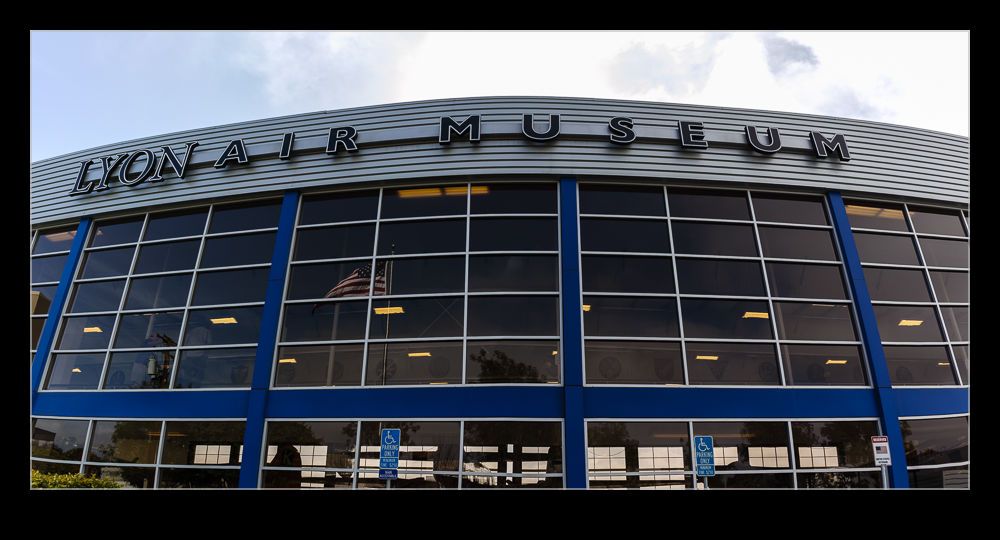 A weekend in Southern California for work was not my idea of fun but I did have a few hours free on the Sunday morning so I headed down to Santa Anna to the Lyon Air Museum. It is located on the opposite side of John Wayne Airport from the main terminal building and is not terribly obvious unless you look hard. Even the entrance road is a bit obscure and could be easily missed. However, once there, it was definitely worth the time.
A weekend in Southern California for work was not my idea of fun but I did have a few hours free on the Sunday morning so I headed down to Santa Anna to the Lyon Air Museum. It is located on the opposite side of John Wayne Airport from the main terminal building and is not terribly obvious unless you look hard. Even the entrance road is a bit obscure and could be easily missed. However, once there, it was definitely worth the time.
 The museum is in a modern structure and has an impressive collection. Supposedly the planes are all airworthy and they have some interesting ones there. Some of the collection will get their own posts. For now, here is an overlook of the museum and a few of the side exhibits that don’t get their own story.
The museum is in a modern structure and has an impressive collection. Supposedly the planes are all airworthy and they have some interesting ones there. Some of the collection will get their own posts. For now, here is an overlook of the museum and a few of the side exhibits that don’t get their own story.
Mossie Night Run
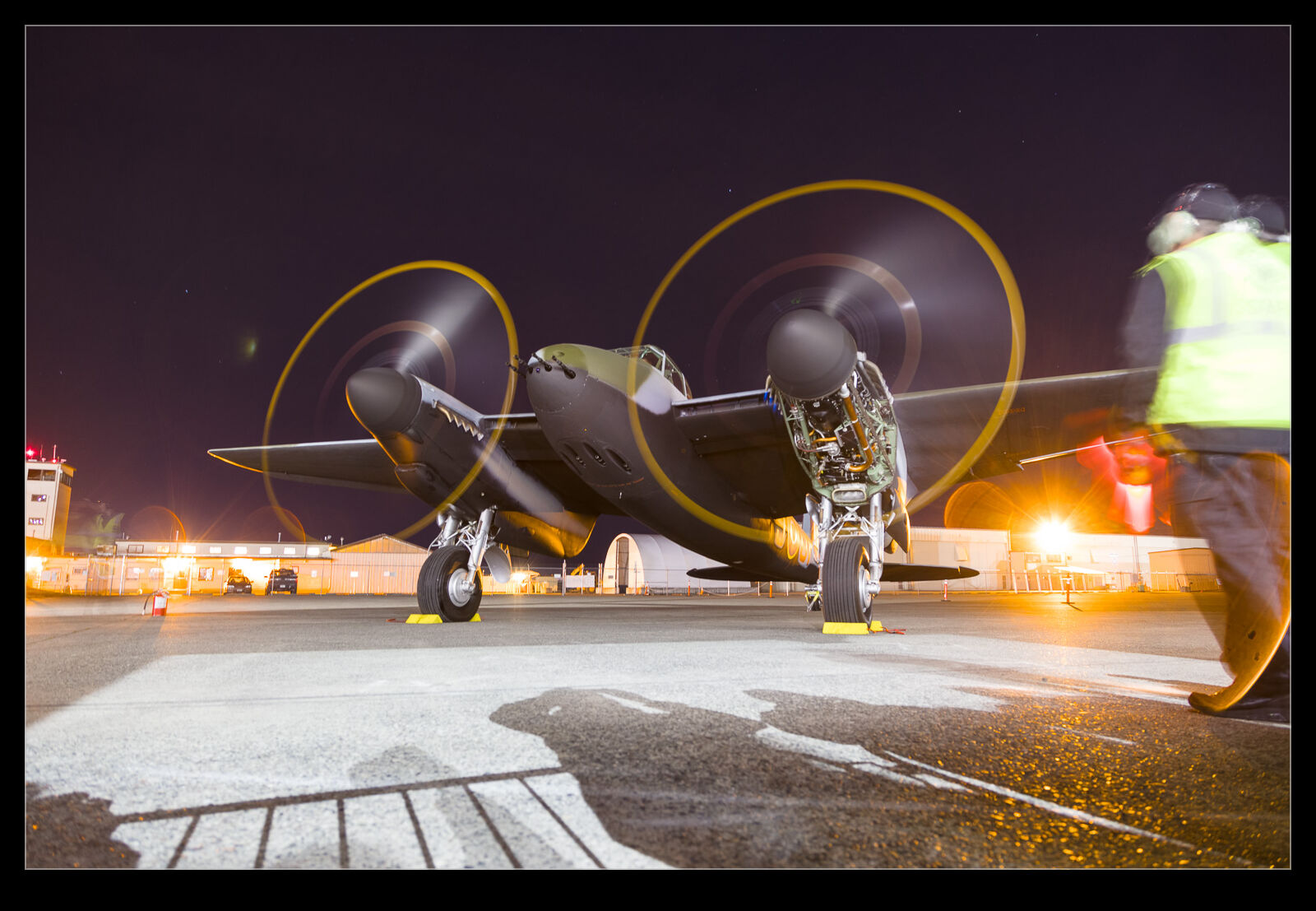 Night photo shoots are becoming more popular these days. The Flying Heritage Combat Armor Museum (FHCAM) held one with the de Havilland Mosquito. The evening started out with the plane on the ramp when people were free to wander around the aircraft. I was shooting a lot of long exposures using the tripod which does a good job of removing the people provided they keep moving. However, a few people were hanging around for long periods so they show up in the shots. Others were using the flashes on their cameras or flashlights to look at stuff which made things blow out.
Night photo shoots are becoming more popular these days. The Flying Heritage Combat Armor Museum (FHCAM) held one with the de Havilland Mosquito. The evening started out with the plane on the ramp when people were free to wander around the aircraft. I was shooting a lot of long exposures using the tripod which does a good job of removing the people provided they keep moving. However, a few people were hanging around for long periods so they show up in the shots. Others were using the flashes on their cameras or flashlights to look at stuff which made things blow out.
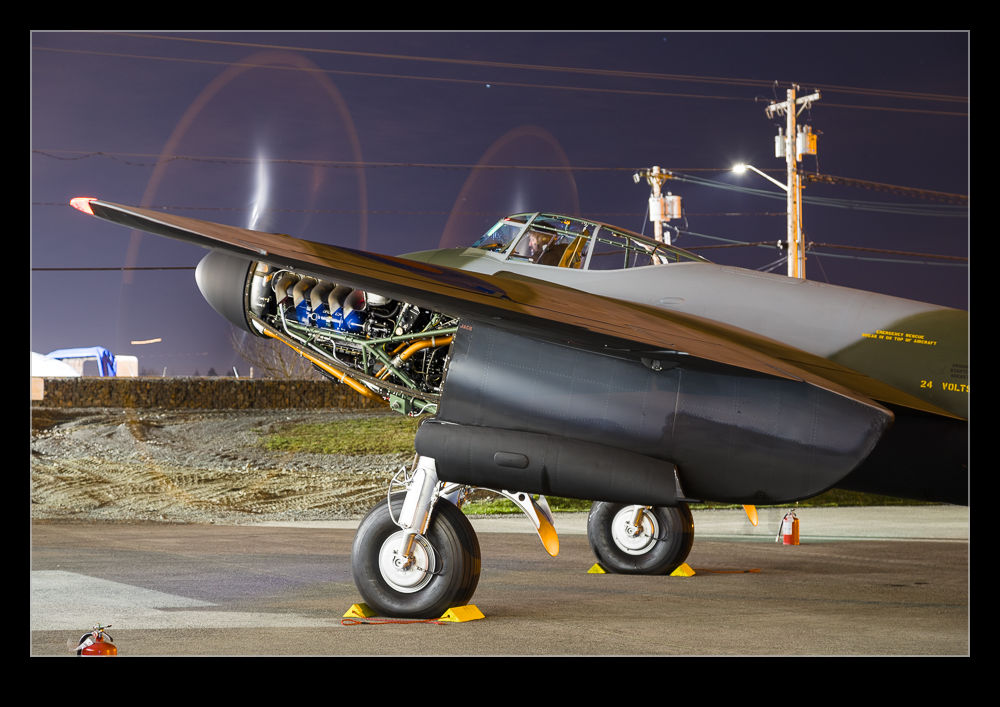 Once we were all cleared from the ramp, one of the FHCAM crew came out to talk about the aircraft. He was the one that would carry out the engine runs and he ran through the test procedures that would be followed for the engines. People had the chance to ask questions and get a good understanding of the plane and how it is operated.
Once we were all cleared from the ramp, one of the FHCAM crew came out to talk about the aircraft. He was the one that would carry out the engine runs and he ran through the test procedures that would be followed for the engines. People had the chance to ask questions and get a good understanding of the plane and how it is operated.
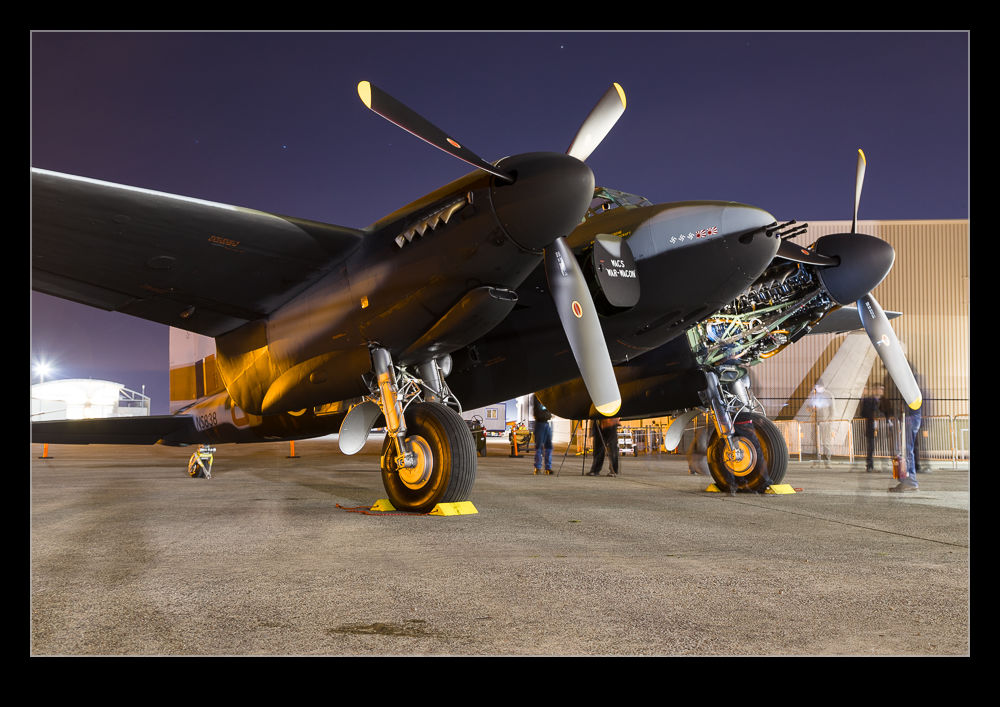 Then came the fun. The engines were fired up in sequence. Then they were run through the test program. The blue flame from the exhaust stacks could be clearly seen in the very dark conditions. When the mag checks were carried out, the flames were even more conspicuous. I moved around a bit to get some different positions. I was quite surprised to see how blurred some of the shots were. The aircraft clearly moves a lot despite being chocked and so some of the shots were totally unusable. This was a lesson learned. In future I would focus on shortening the exposure times a lot to minimize this issue which I hadn’t anticipated.
Then came the fun. The engines were fired up in sequence. Then they were run through the test program. The blue flame from the exhaust stacks could be clearly seen in the very dark conditions. When the mag checks were carried out, the flames were even more conspicuous. I moved around a bit to get some different positions. I was quite surprised to see how blurred some of the shots were. The aircraft clearly moves a lot despite being chocked and so some of the shots were totally unusable. This was a lesson learned. In future I would focus on shortening the exposure times a lot to minimize this issue which I hadn’t anticipated.
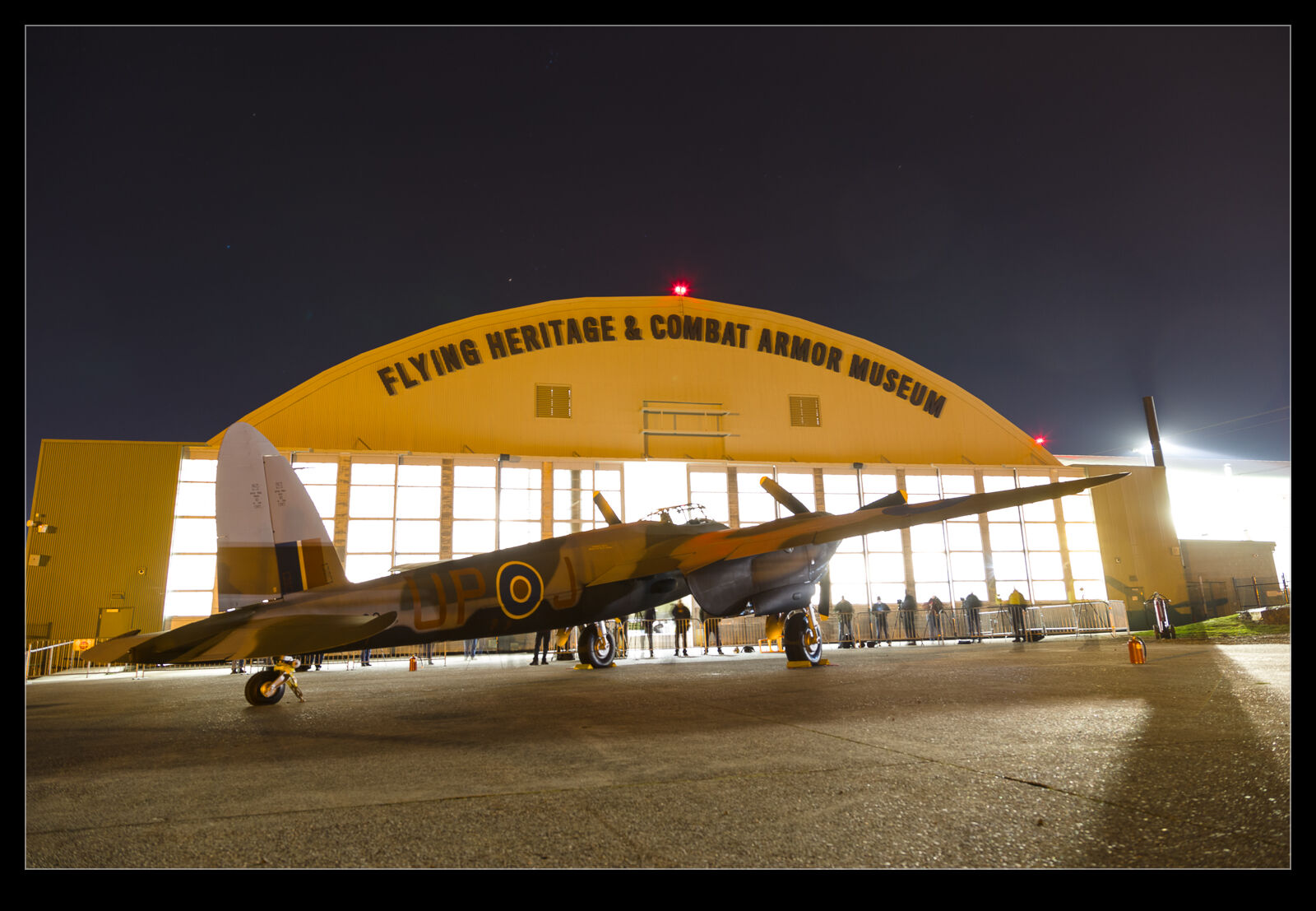 I also shot a bunch of video while the runs were underway. The edited video is below. It was a fun evening and thanks to FHCAM for holding it. It would be fun to do on another type. It might be nice to have a touch more light on the ramp but the dark conditions did have some advantages. I discovered a bit about shooting in that environment which should hopefully help on future night shoots.
I also shot a bunch of video while the runs were underway. The edited video is below. It was a fun evening and thanks to FHCAM for holding it. It would be fun to do on another type. It might be nice to have a touch more light on the ramp but the dark conditions did have some advantages. I discovered a bit about shooting in that environment which should hopefully help on future night shoots.
That Rare Beast, the 109
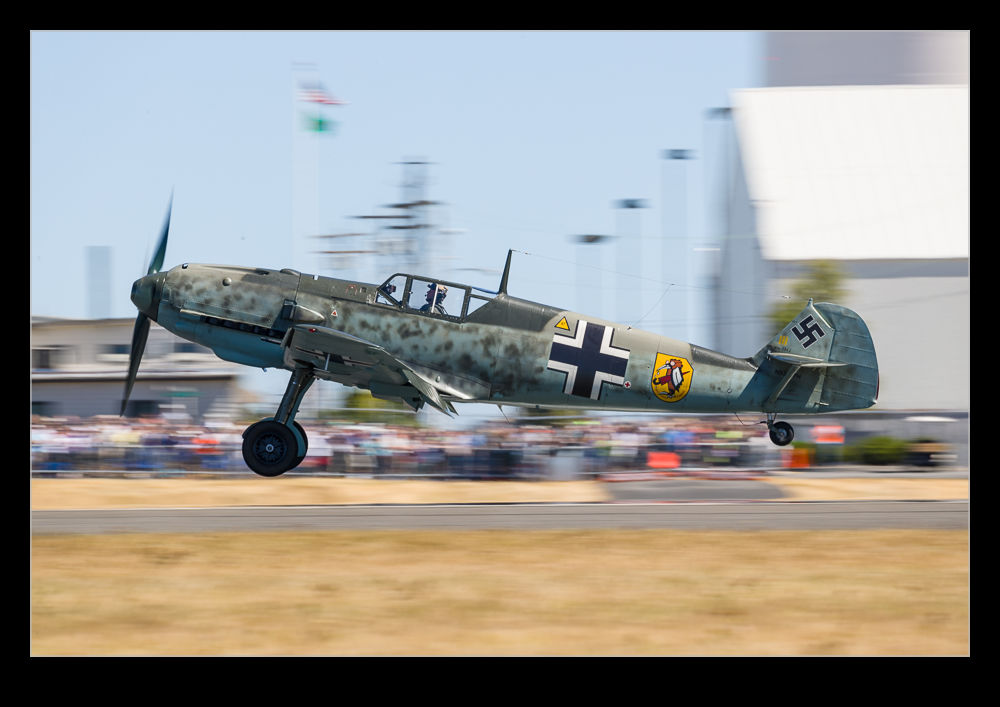 The Bf-109 was built in huge numbers but a very small number of them survive. The Hispano Buchon was a 109 fitted with a Merlin engine and they served after the war and ultimately made their way into collections in bigger numbers but real 109s are a lot thinner on the ground. They also look so much meaner in my mind courtesy of the thicker nose for the DB engine. FHCAM has a 109 and it flew during the European Theater Day.
The Bf-109 was built in huge numbers but a very small number of them survive. The Hispano Buchon was a 109 fitted with a Merlin engine and they served after the war and ultimately made their way into collections in bigger numbers but real 109s are a lot thinner on the ground. They also look so much meaner in my mind courtesy of the thicker nose for the DB engine. FHCAM has a 109 and it flew during the European Theater Day.
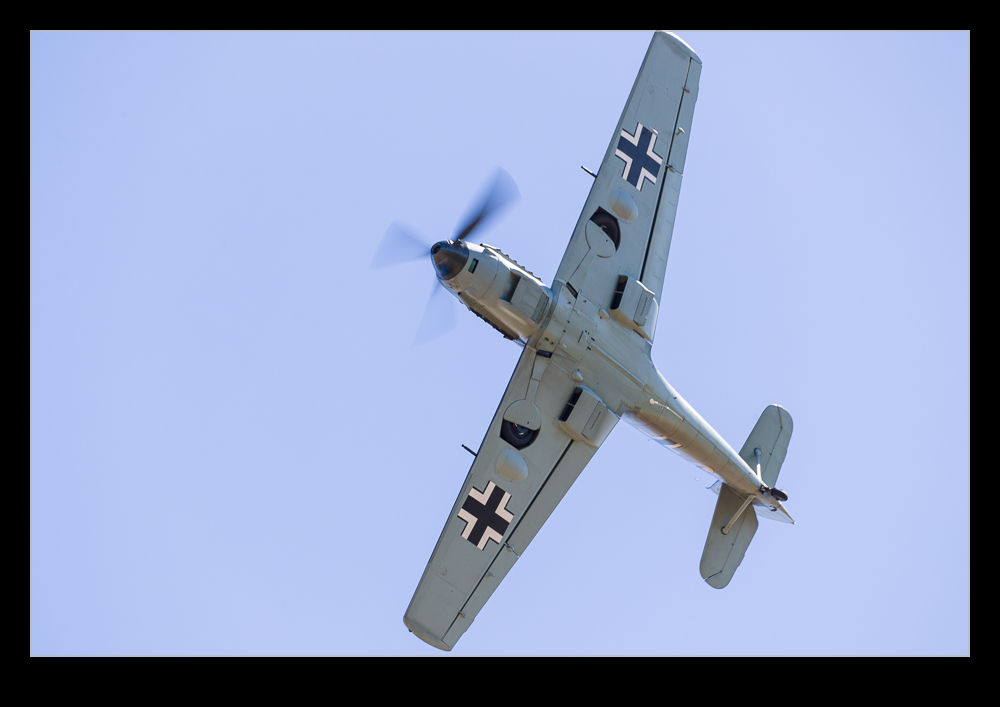 It went out for a run in the morning and I got a couple of quick shots of it then. It flew again in the afternoon, this time paired with the Mosquito. Sadly, there were limited times when they were alone and the Mosquito was a priority for me that day so the 109 did not get my focus. I did get to shoot a few frames of it and, with a sunny day bringing out the camouflage nicely, I was quite pleased with the results. Obviously there are better conditions to shoot it but I had very few 109 airborne shots before this day so I expanded the collection quite a bit.
It went out for a run in the morning and I got a couple of quick shots of it then. It flew again in the afternoon, this time paired with the Mosquito. Sadly, there were limited times when they were alone and the Mosquito was a priority for me that day so the 109 did not get my focus. I did get to shoot a few frames of it and, with a sunny day bringing out the camouflage nicely, I was quite pleased with the results. Obviously there are better conditions to shoot it but I had very few 109 airborne shots before this day so I expanded the collection quite a bit.
Parallax Preferences
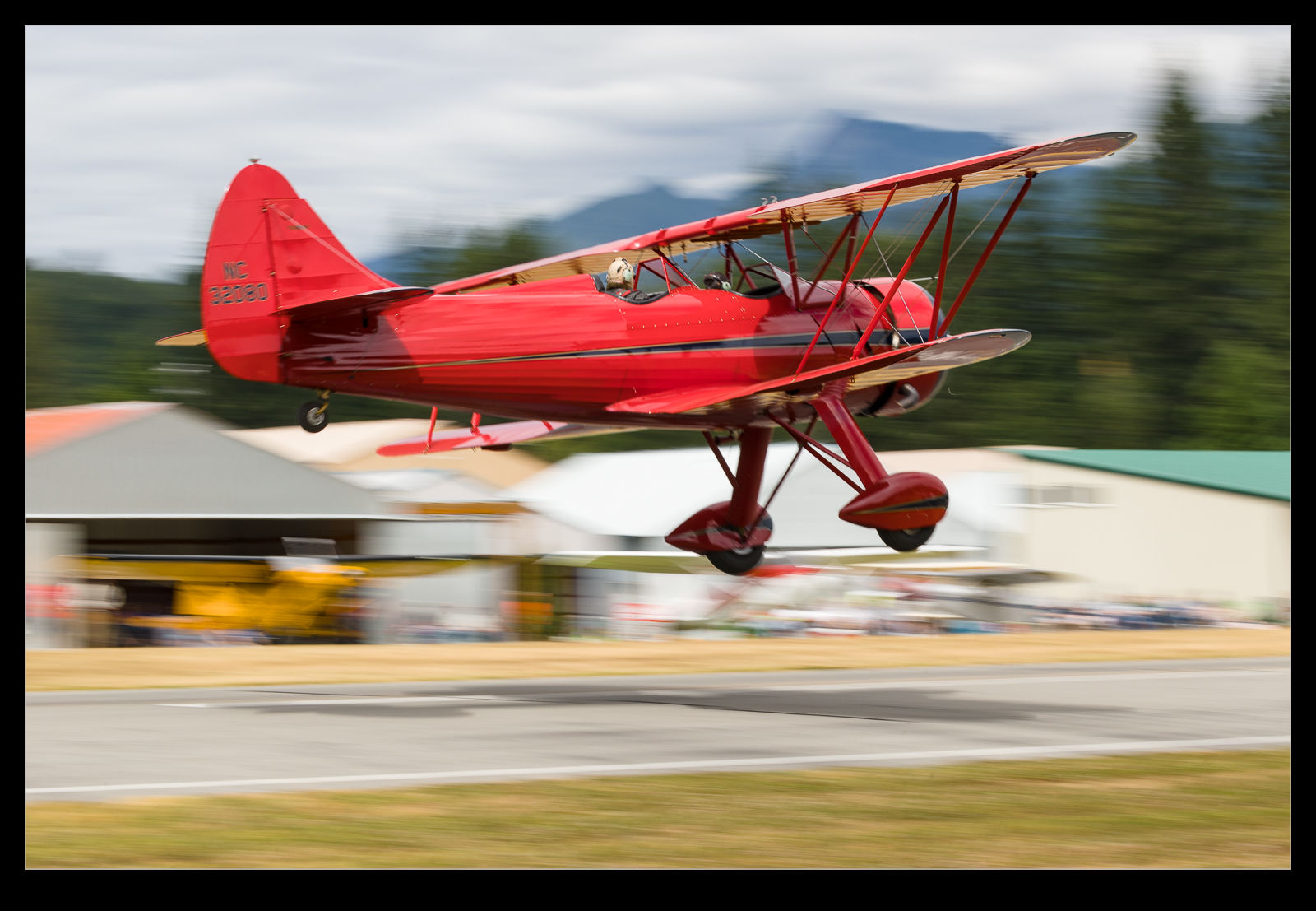 This post is really a question about what people like in an image and what they are prepared to tolerate. I was at Concrete for the vintage aircraft fly-in up there a while back. This is an event where you get to be very close to the aircraft. I was able to experiment with shutter speeds that were very low to get lots of prop blur. Because the planes are so close, you are not using a long lens and so the low shutter speeds are less likely to cause a problem with camera shake.
This post is really a question about what people like in an image and what they are prepared to tolerate. I was at Concrete for the vintage aircraft fly-in up there a while back. This is an event where you get to be very close to the aircraft. I was able to experiment with shutter speeds that were very low to get lots of prop blur. Because the planes are so close, you are not using a long lens and so the low shutter speeds are less likely to cause a problem with camera shake.
 However, another problem comes to the fore. Since you are so close, using a low shutter speed and photographing something that is moving past you, you get parallax issues with sharpness on the plane. The different parts of the plane are moving at different speeds relative to you as it passes so, if one part of the plane is sharp, another part is unlikely to be so. The question is, what is acceptable.
However, another problem comes to the fore. Since you are so close, using a low shutter speed and photographing something that is moving past you, you get parallax issues with sharpness on the plane. The different parts of the plane are moving at different speeds relative to you as it passes so, if one part of the plane is sharp, another part is unlikely to be so. The question is, what is acceptable.
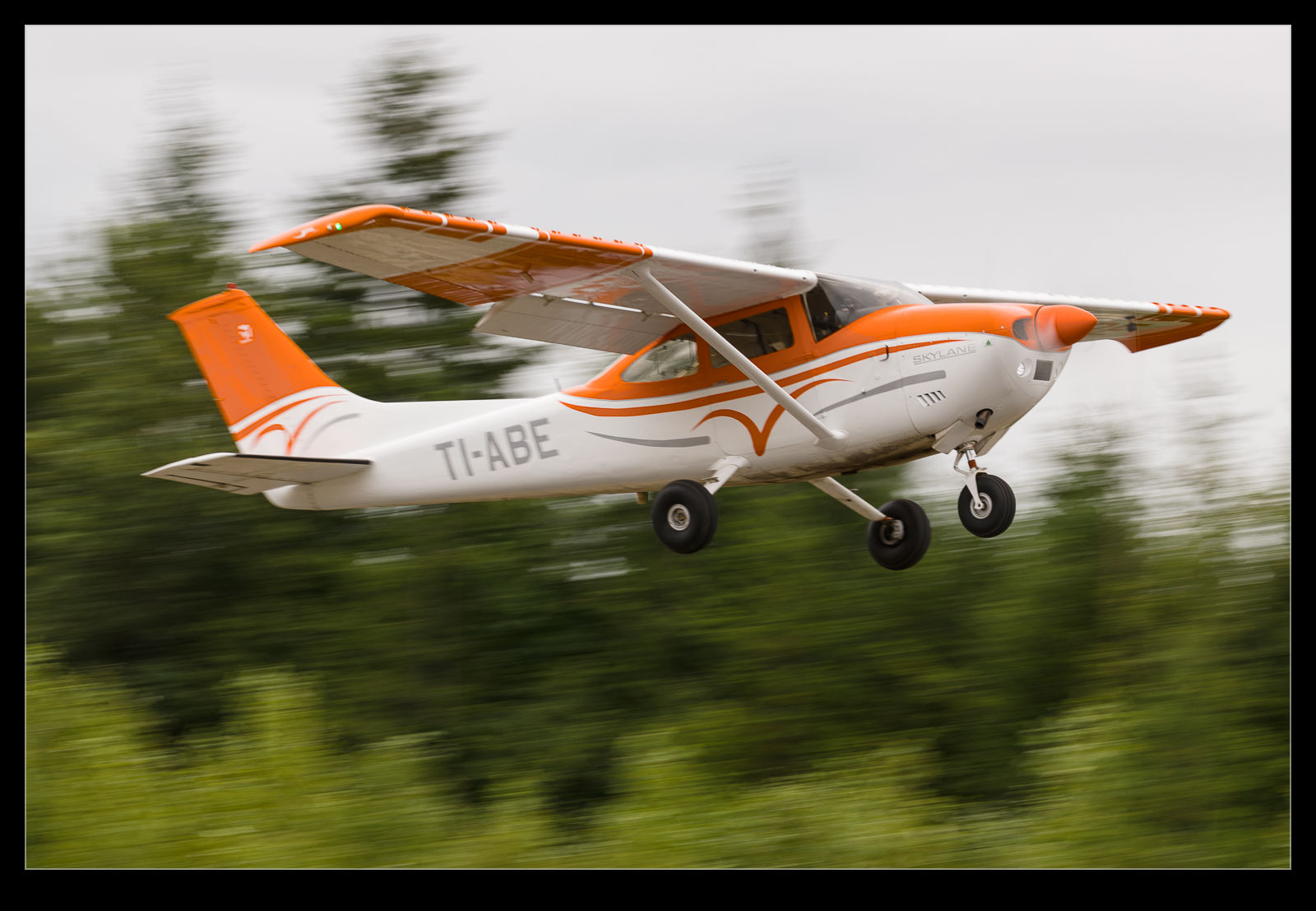 I have spoken to friends about this in the past. One or two of them have expressed their unhappiness with having a blurry part of the airframe. Others prefer the blur this allows to the background to emphasize the speed. Some are most bothered about the amount of blur on the prop.
I have spoken to friends about this in the past. One or two of them have expressed their unhappiness with having a blurry part of the airframe. Others prefer the blur this allows to the background to emphasize the speed. Some are most bothered about the amount of blur on the prop.
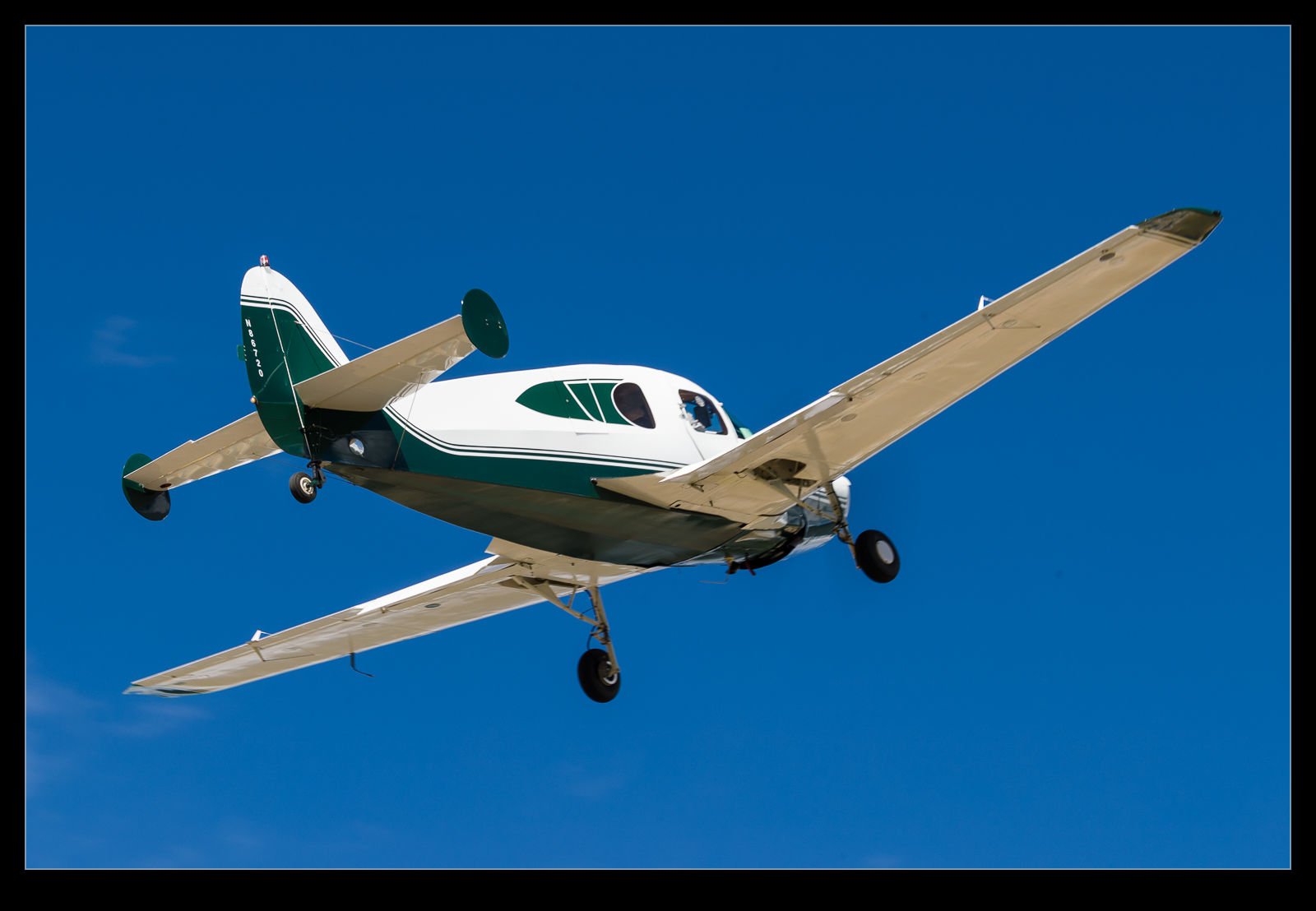 My first instinct with a shot is whether the nose is sharp. For me this is a bit like whether the eye is sharp on a wildlife shot. If the nose is sharp, I can tolerate a blurry back end. But, when the plane is going away from you, the tail is more prominent in the view. In this case, is it better to have the tail sharp than the nose since the blur of the backend will be the thing you see first and will drive your first impression of the image. I would really like to know what people prefer.
My first instinct with a shot is whether the nose is sharp. For me this is a bit like whether the eye is sharp on a wildlife shot. If the nose is sharp, I can tolerate a blurry back end. But, when the plane is going away from you, the tail is more prominent in the view. In this case, is it better to have the tail sharp than the nose since the blur of the backend will be the thing you see first and will drive your first impression of the image. I would really like to know what people prefer.
Return to Evergreen
 I have made one previous visit to the Evergreen Aviation Museum in McMinnville Oregon. That was probably ten years ago. I was in Portland for the morning Open House at the ANG unit so, having gone that far, I decided to go to the museum to see what had changed. I underestimated a couple of things. One, McMinnville is a bit further from Portland than I thought it was so it took about an hour to get there and that hour was also going to be added to my return journey. Also, a lot of things have changed so I was going to spend more time there than I thought. I was not getting home early that evening!
I have made one previous visit to the Evergreen Aviation Museum in McMinnville Oregon. That was probably ten years ago. I was in Portland for the morning Open House at the ANG unit so, having gone that far, I decided to go to the museum to see what had changed. I underestimated a couple of things. One, McMinnville is a bit further from Portland than I thought it was so it took about an hour to get there and that hour was also going to be added to my return journey. Also, a lot of things have changed so I was going to spend more time there than I thought. I was not getting home early that evening!
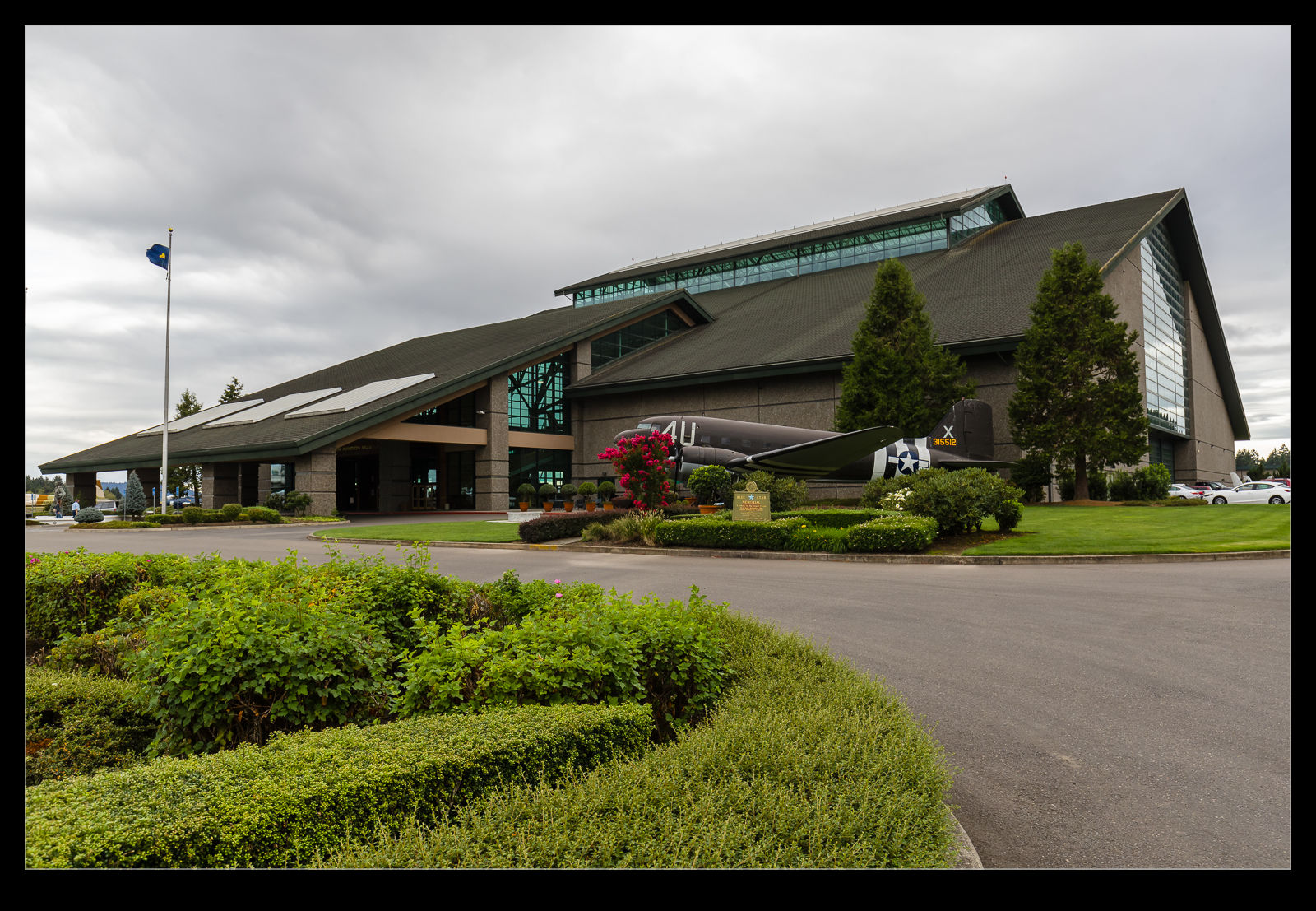 When I last went, one building housed the exhibits and a second was being built. It was close to completion and they were talking of space exhibits and, hopefully, a Space Shuttle. That didn’t work out but now there is certainly a lot more to see. There are two main exhibition buildings – pre-Vietnam and post-Vietnam eras – housing civilian and military exhibits. There is also a theater building. None of this includes the water park that is close by.
When I last went, one building housed the exhibits and a second was being built. It was close to completion and they were talking of space exhibits and, hopefully, a Space Shuttle. That didn’t work out but now there is certainly a lot more to see. There are two main exhibition buildings – pre-Vietnam and post-Vietnam eras – housing civilian and military exhibits. There is also a theater building. None of this includes the water park that is close by.
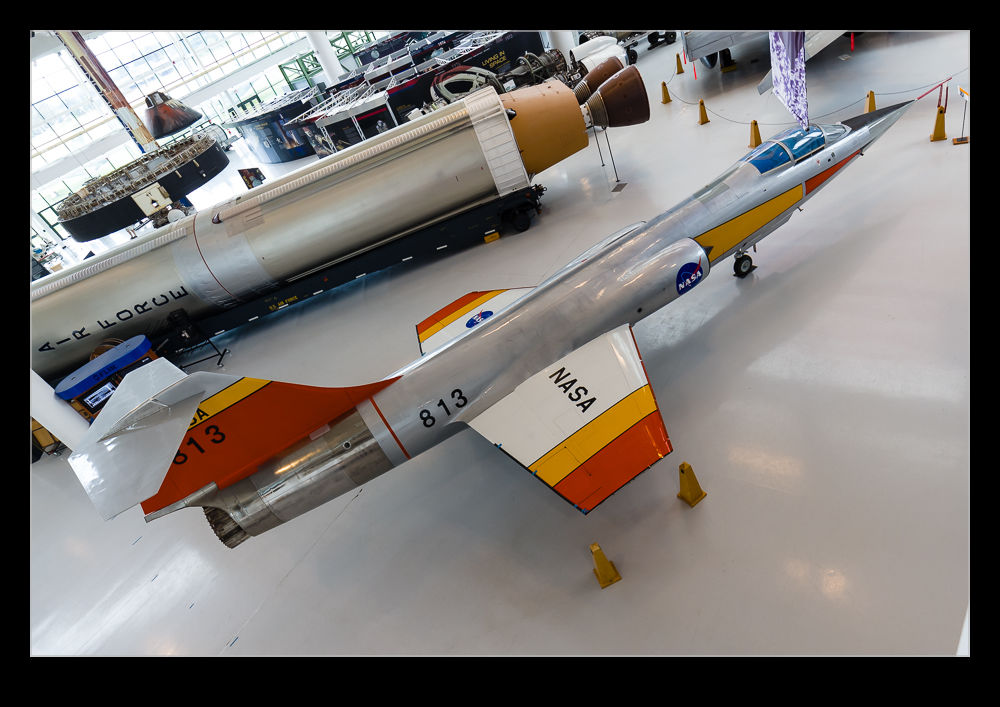 The amount of space means that the exhibits are not crammed upon each other although some areas are a little more cramped than others. Some helicopters that I rather liked were jammed together. There is a shortage of space I guess, though, because lots of exhibits are outside and there are a few still scattered around the parking lot awaiting restoration. That is not a criticism though. The museum has plenty of great stuff to see (although the Beech Starship was in the parking lot last time I was there and still is, looking a little more forlorn now than it did then).
The amount of space means that the exhibits are not crammed upon each other although some areas are a little more cramped than others. Some helicopters that I rather liked were jammed together. There is a shortage of space I guess, though, because lots of exhibits are outside and there are a few still scattered around the parking lot awaiting restoration. That is not a criticism though. The museum has plenty of great stuff to see (although the Beech Starship was in the parking lot last time I was there and still is, looking a little more forlorn now than it did then).
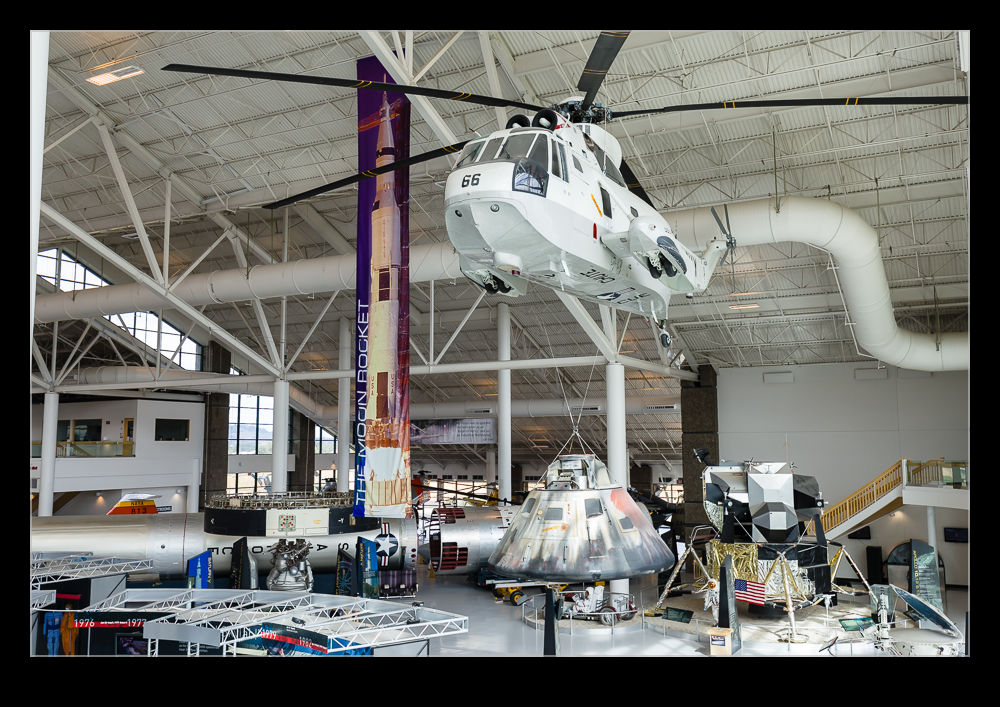 If I were to try and pick out highlights, it would be tricky. The Spruce Goose is the main feature of the original building and it still dominates things there. Indeed, it is so large that, at times, you actually forget it is there because it either is way above you or it fills the view becoming invisible in the process. The SR-71 is a delight to see at any time and the way that one engine pod is opened up is a nice touch and gives a good idea of the installation for a unique engine.
If I were to try and pick out highlights, it would be tricky. The Spruce Goose is the main feature of the original building and it still dominates things there. Indeed, it is so large that, at times, you actually forget it is there because it either is way above you or it fills the view becoming invisible in the process. The SR-71 is a delight to see at any time and the way that one engine pod is opened up is a nice touch and gives a good idea of the installation for a unique engine.
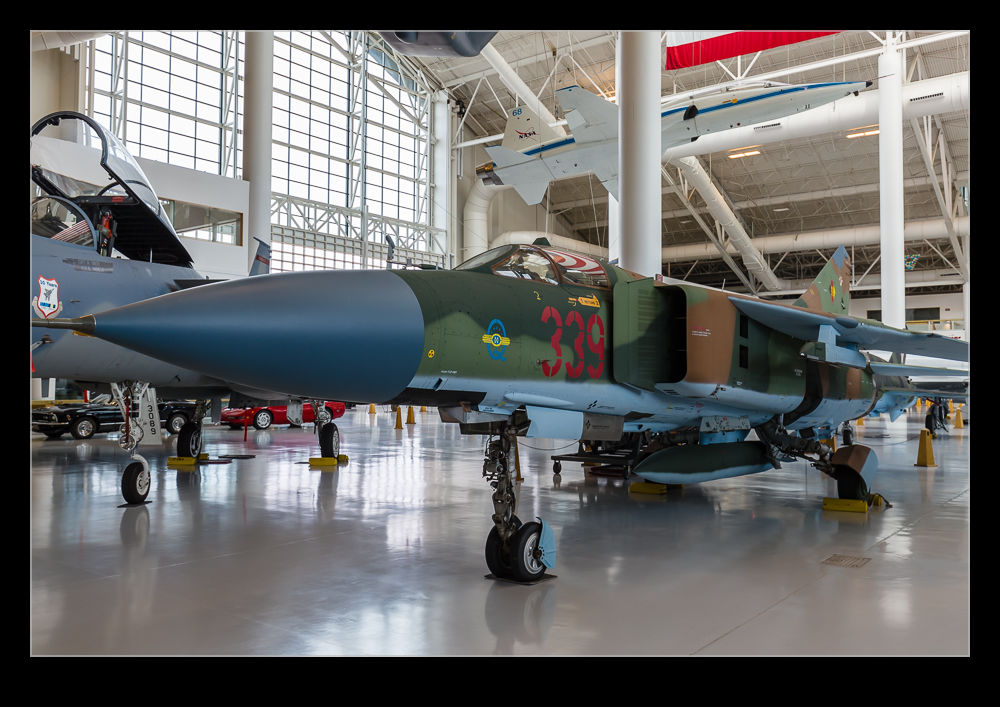 The rockets and missiles are well displayed and I shall come back to them in another post. Some of the aircraft are painted up in unusual schemes although these are not always original to the airframe on display. Even so, they are a change from what you might normally see. Having a 747-100 parked outside the front of the museum is a nice touch too – a reminder of Evergreen’s operations before the airline went bust.
The rockets and missiles are well displayed and I shall come back to them in another post. Some of the aircraft are painted up in unusual schemes although these are not always original to the airframe on display. Even so, they are a change from what you might normally see. Having a 747-100 parked outside the front of the museum is a nice touch too – a reminder of Evergreen’s operations before the airline went bust.
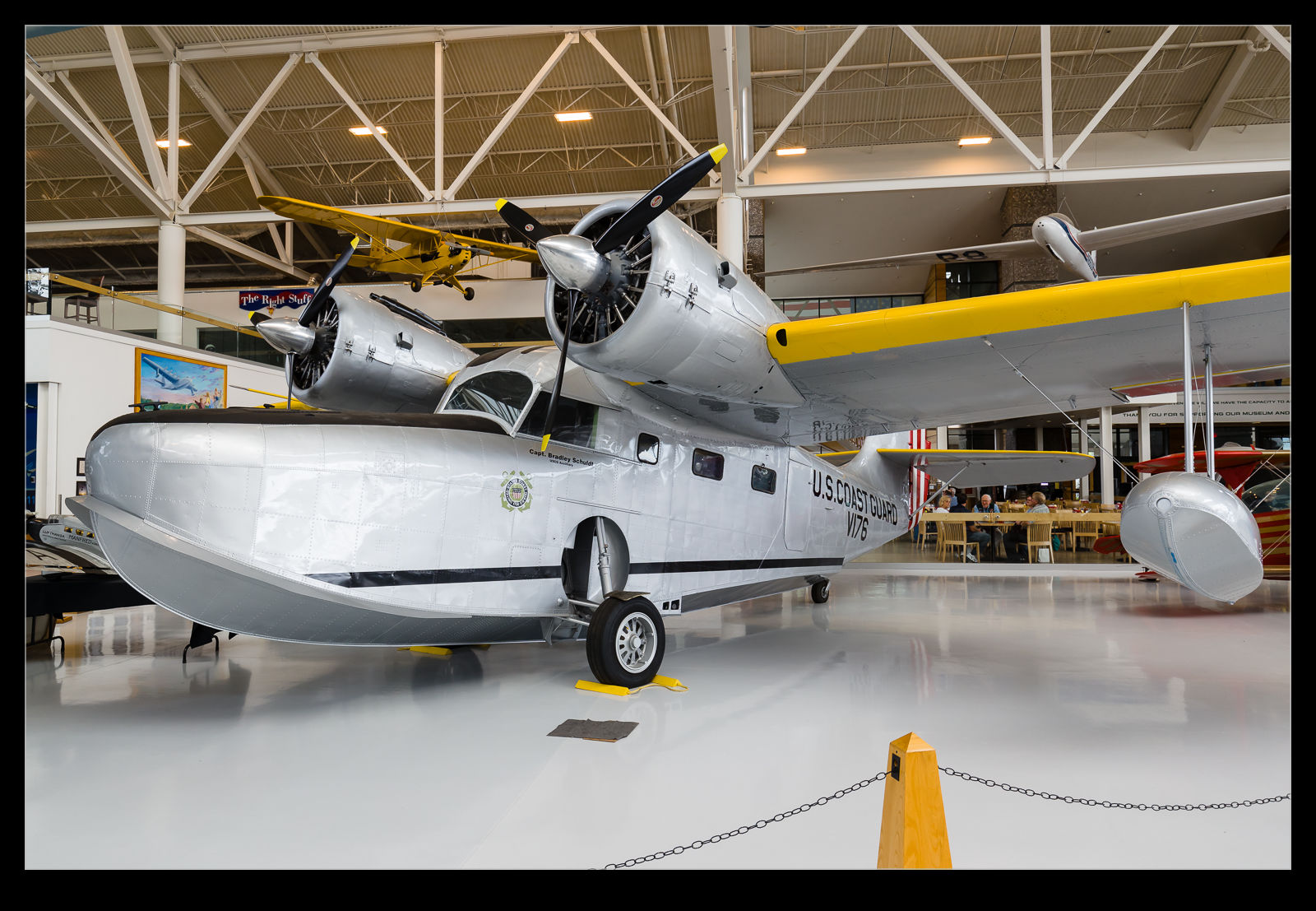 I only had a couple of hours so I was in a bit of a hurry working my way around but this is definitely a place that you could spend a lot of time. The journey there is long enough to make doing so something that you should really plan for. I saw plenty that I had seen before but plenty that was either not there or was not displayed in the same way. If you are in the vicinity, make a trip to McMinnville.
I only had a couple of hours so I was in a bit of a hurry working my way around but this is definitely a place that you could spend a lot of time. The journey there is long enough to make doing so something that you should really plan for. I saw plenty that I had seen before but plenty that was either not there or was not displayed in the same way. If you are in the vicinity, make a trip to McMinnville.
Stirring Spitfire Performance
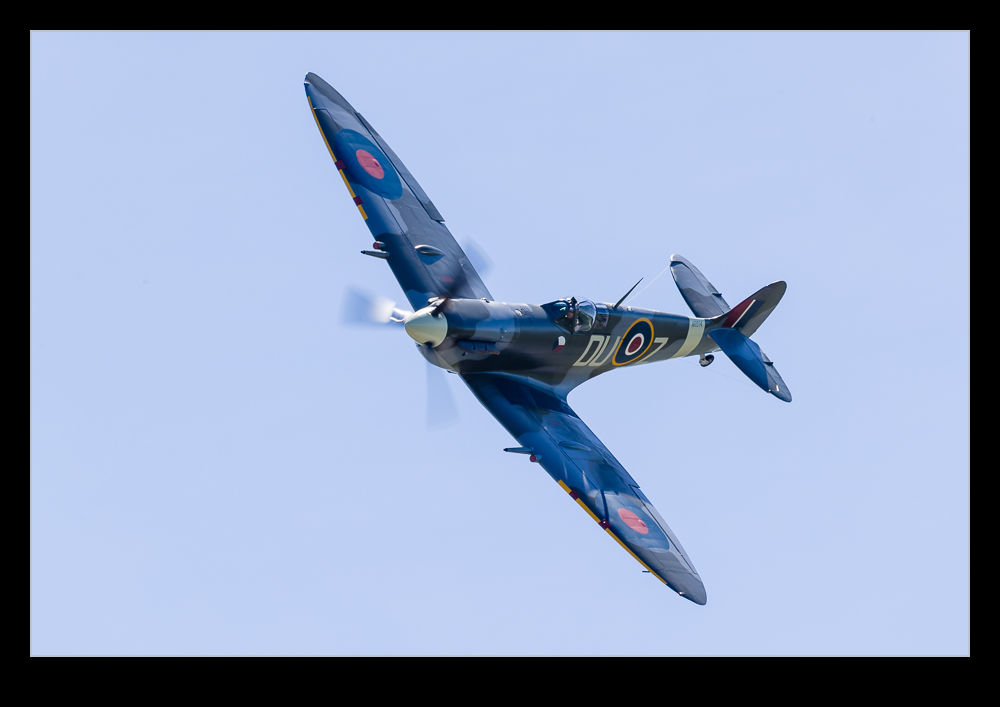 In my younger days, I was all about modern aircraft and didn’t have much interest in warbirds. Over time and having been involved with a number of groups that operate these aircraft, I have grown far more interested. Being in the US, you get a lot of American vintage aircraft to see. In the UK I might not have been so bothered about Spitfires but, now I see them less often, they have become of greater interest.
In my younger days, I was all about modern aircraft and didn’t have much interest in warbirds. Over time and having been involved with a number of groups that operate these aircraft, I have grown far more interested. Being in the US, you get a lot of American vintage aircraft to see. In the UK I might not have been so bothered about Spitfires but, now I see them less often, they have become of greater interest.
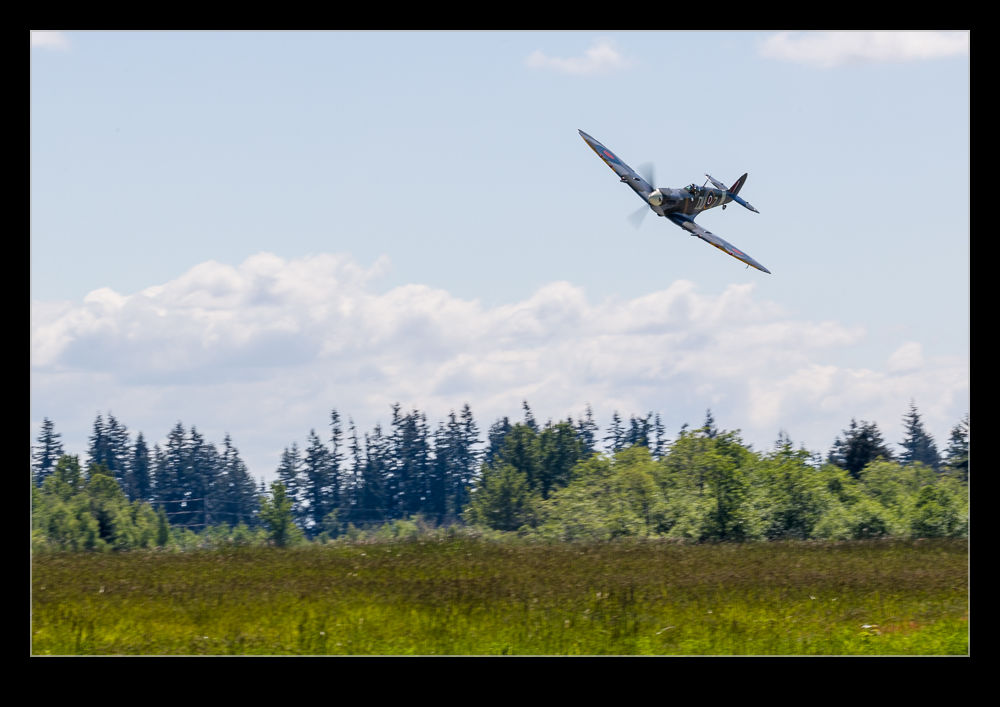 The later model Spitfires seem less graceful to me but the earlier models have a simpler and more elegant appearance. This one was carrying out some flybys at Paine Field during the Open Day. The rumble of the Merlin is well known and common to the P-51s. The line of the Spitfire is unique, though, and seeing it swooping by was really quite exciting. What a great looking aircraft.
The later model Spitfires seem less graceful to me but the earlier models have a simpler and more elegant appearance. This one was carrying out some flybys at Paine Field during the Open Day. The rumble of the Merlin is well known and common to the P-51s. The line of the Spitfire is unique, though, and seeing it swooping by was really quite exciting. What a great looking aircraft.
An Old School Cobra
 The Cobra is still a big part of Marine Corps aviation with the Zulu model the current favorite as it replaces the previous Whiskey models. However, the Cobra started out life as an Army attack helicopter. While they are long retired from Army service, old examples still are airworthy and one of them was performing at the Olympia air show. I was rather pleased to see it when it initially arrived and then it performed a flying display alongside a Huey.
The Cobra is still a big part of Marine Corps aviation with the Zulu model the current favorite as it replaces the previous Whiskey models. However, the Cobra started out life as an Army attack helicopter. While they are long retired from Army service, old examples still are airworthy and one of them was performing at the Olympia air show. I was rather pleased to see it when it initially arrived and then it performed a flying display alongside a Huey.
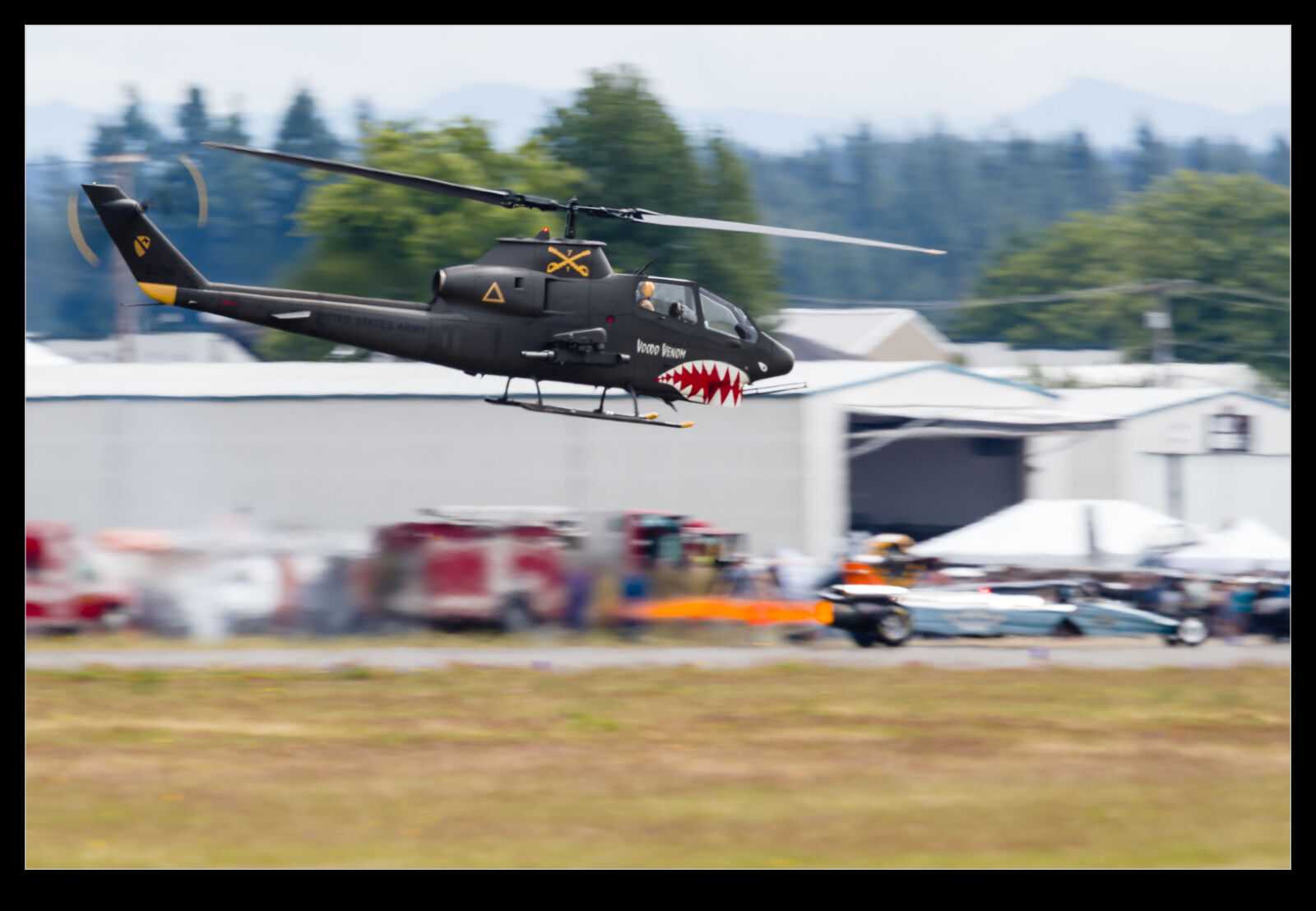 A lightly loaded Cobra is still an agile beast and this one was being thrown around with some zeal. Unfortunately, the sky was rather overcast so the shape was a bit disguised by the shadows but it was still great to see the narrow fuselage combined with the broad chord rotor as it thrashed its way around the display. What a cool looking machine.
A lightly loaded Cobra is still an agile beast and this one was being thrown around with some zeal. Unfortunately, the sky was rather overcast so the shape was a bit disguised by the shadows but it was still great to see the narrow fuselage combined with the broad chord rotor as it thrashed its way around the display. What a cool looking machine.

